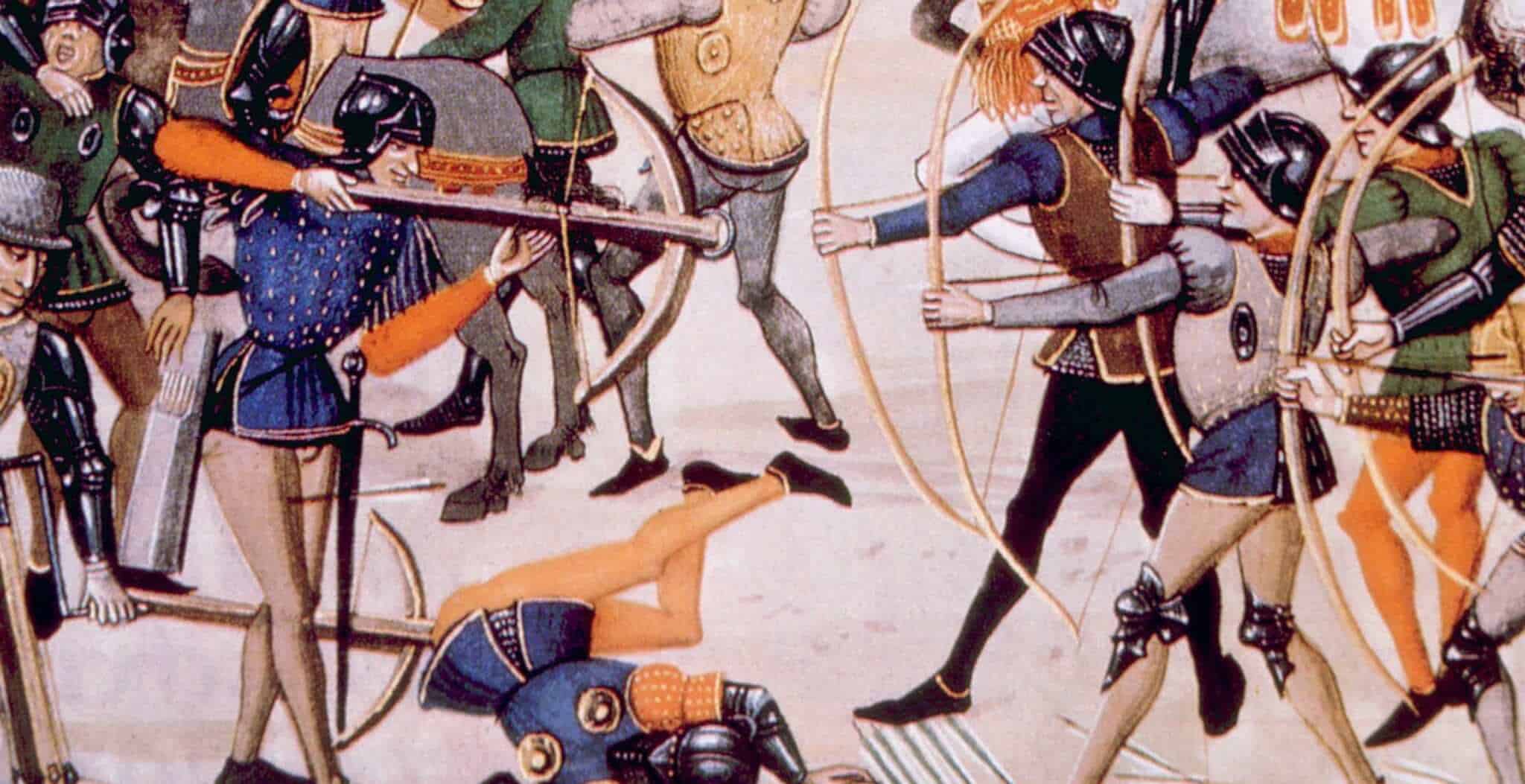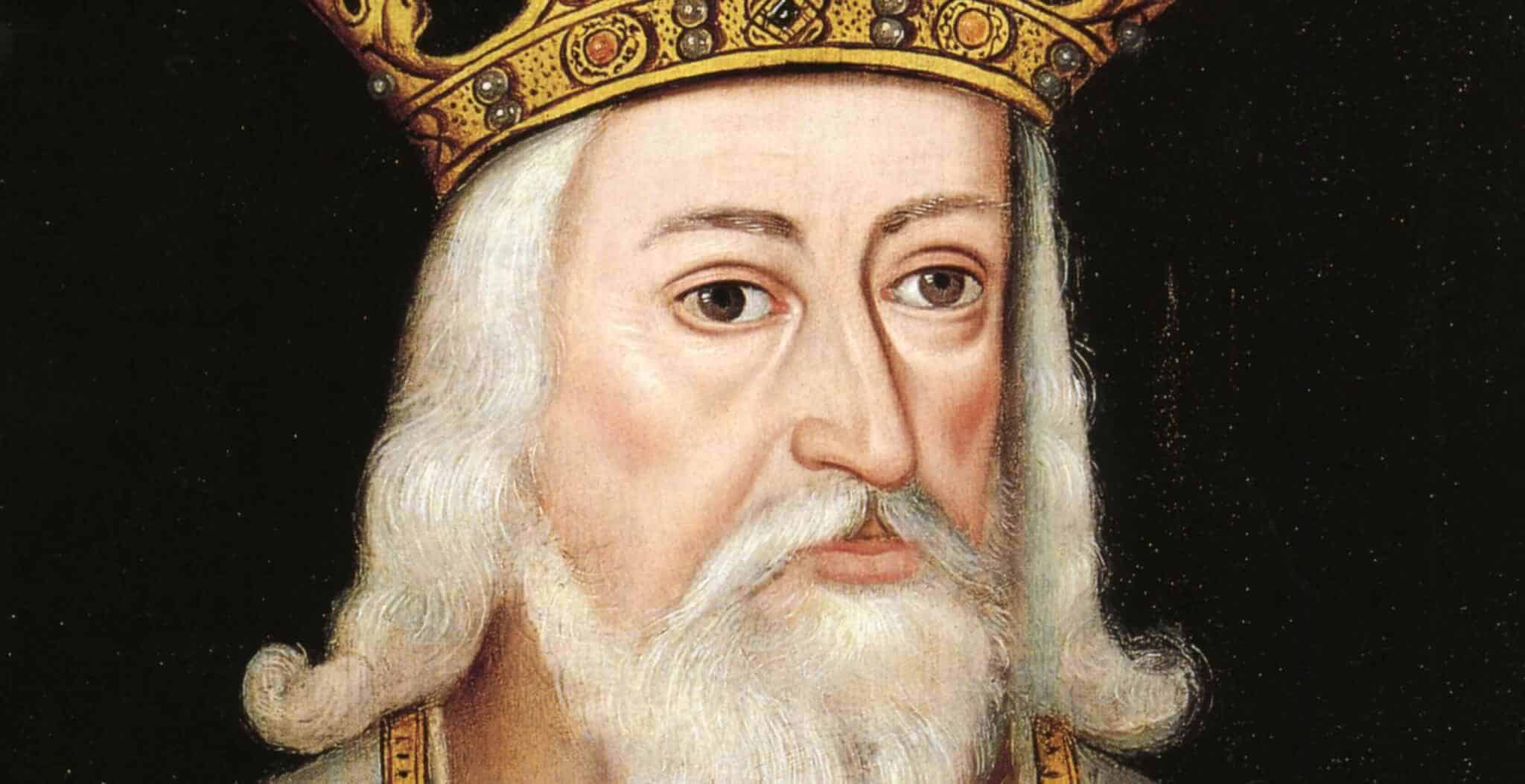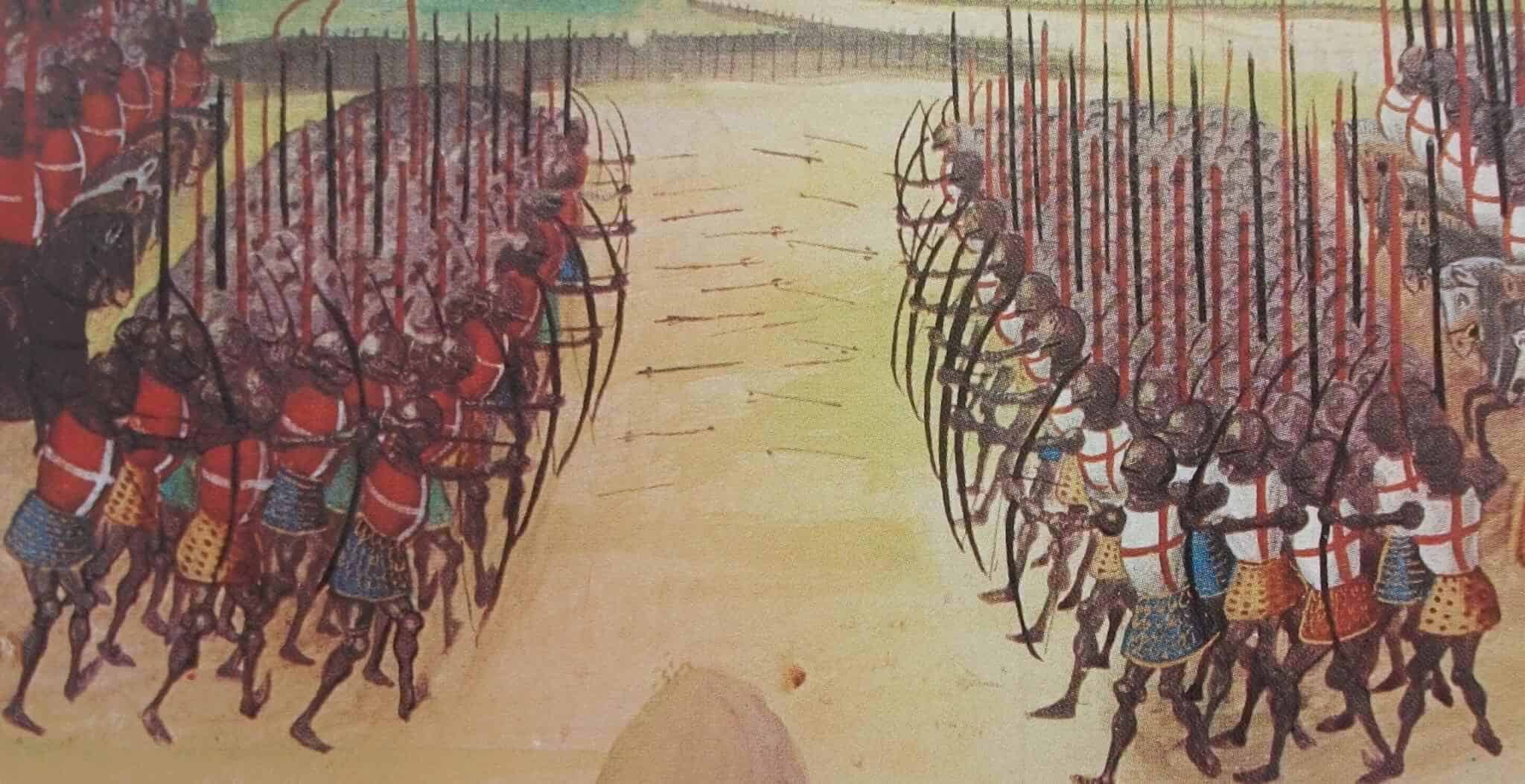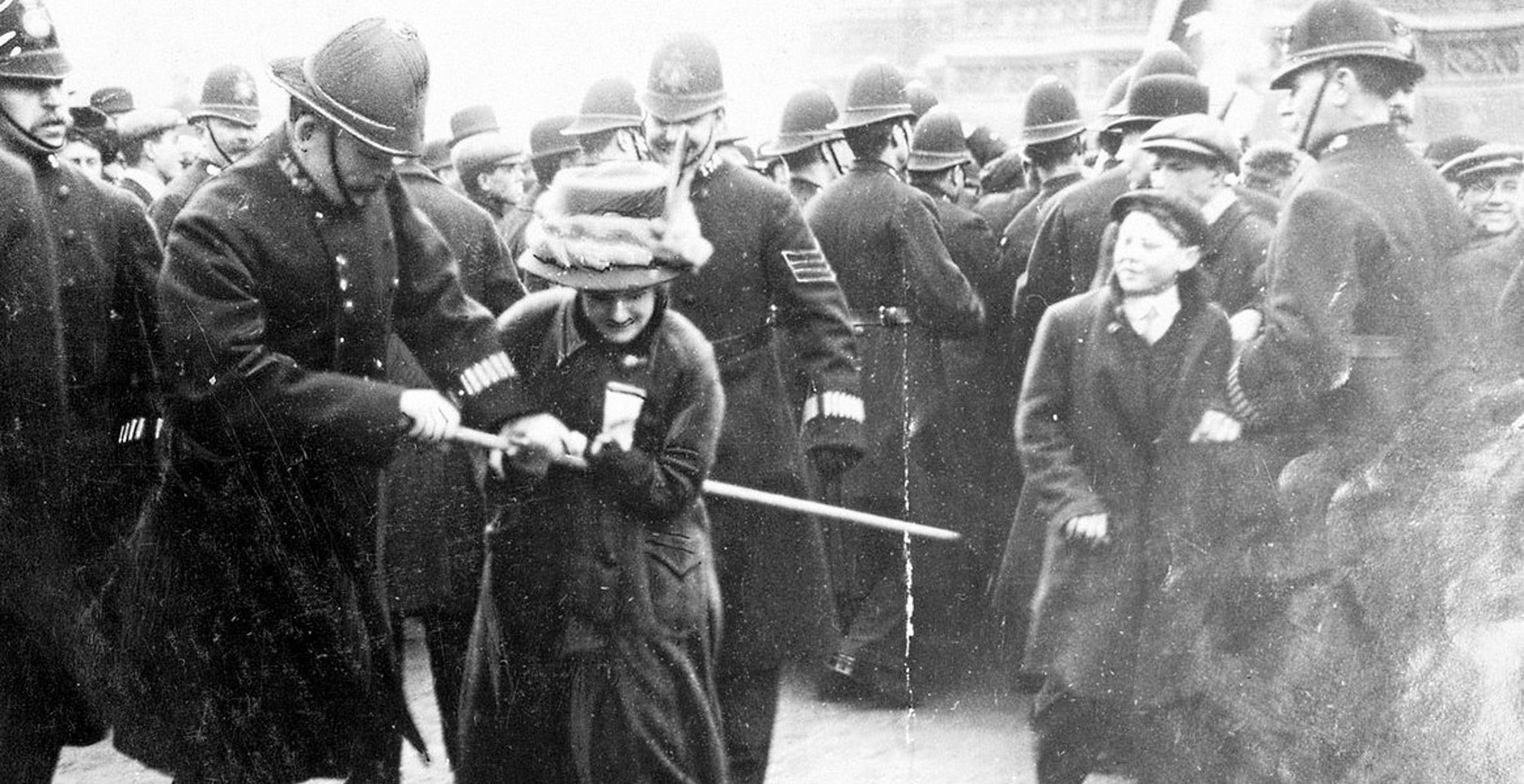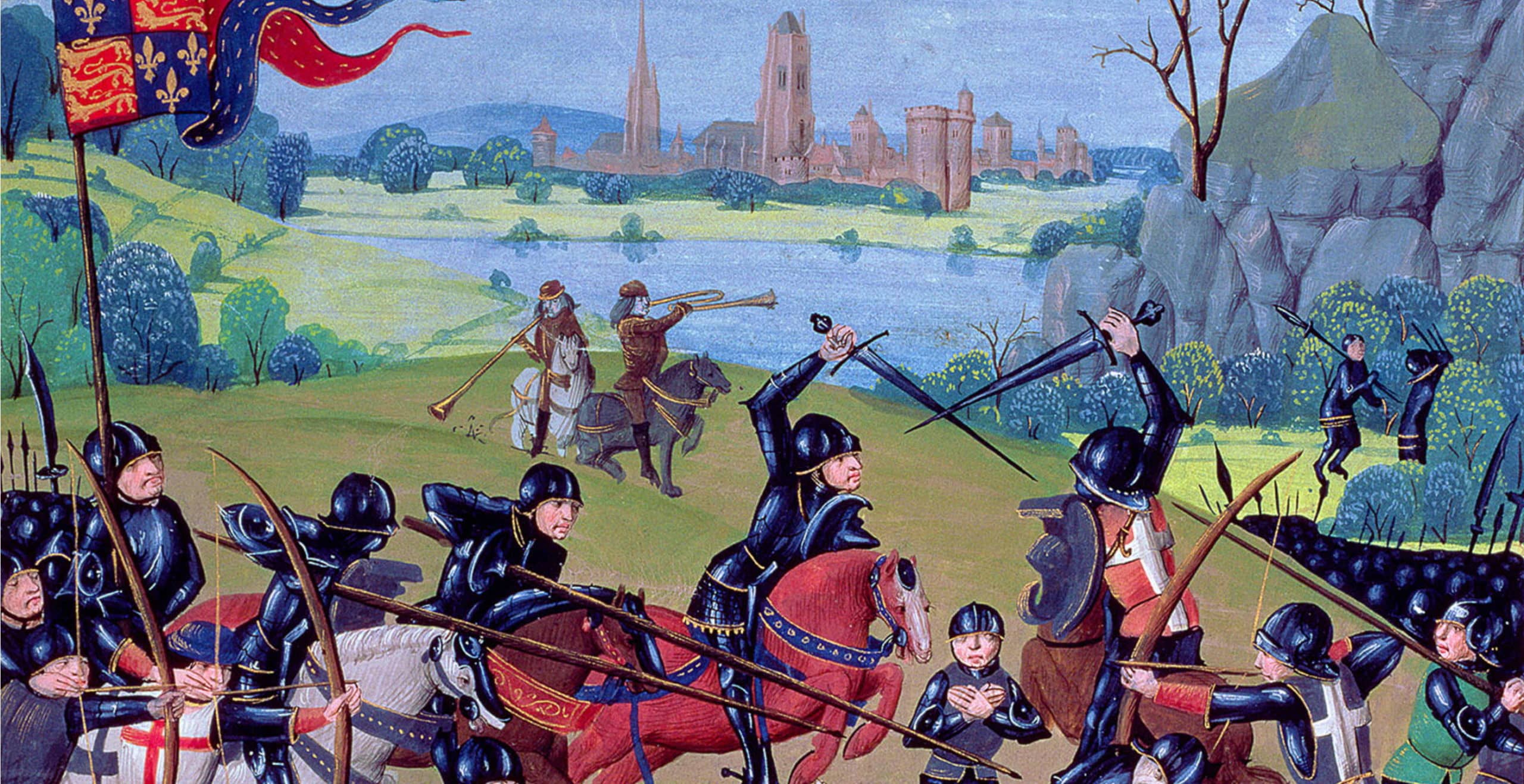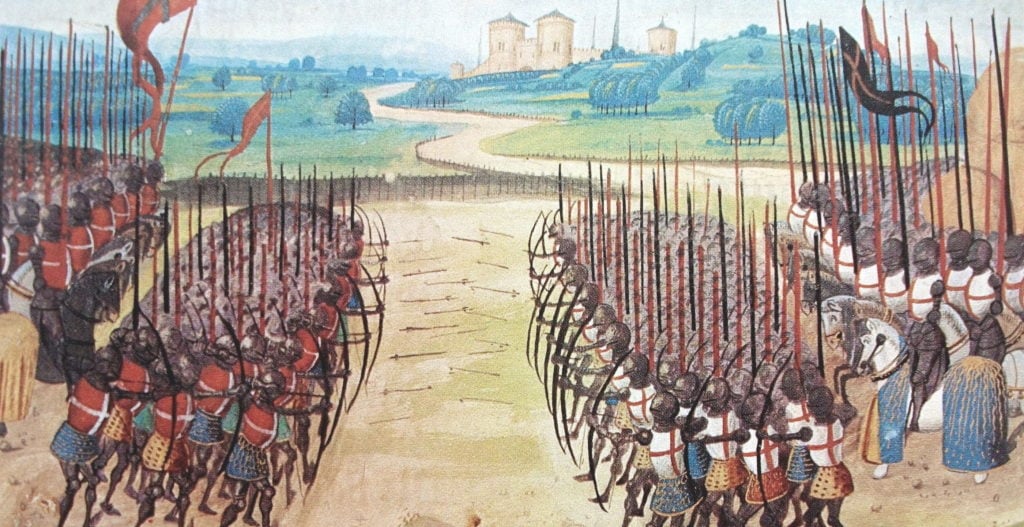Did two silk purses cause the Hundred Years War between France and England?
By the year 1314 the King of France, Philip IV was secure on his throne. Known as Philip ‘the Fair’ for his striking good looks, he had broken the order of Knights Templar the previous year, gaining him the potential of their vast wealth. He had three sons, each grown to manhood and married, with the future of the Capetian dynasty and France seemingly secure.
France in 1314 found itself at peace. Its historical enemy, England was tied to the French Crown with Philip’s daughter Isabella married to King Edward II. She had arrived in England as a twelve-year-old bride in 1308; highly intelligent with an engaging manner, she grew to be a formidable Queen, nicknamed the ‘She-Wolf of France’. Her husband, however, was more drawn to his close courtier Piers Gaveston than to his new bride.
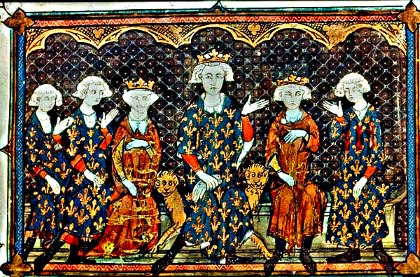
Isabella’s family in 1315
l-r: Isabella’s brothers, Charles IV of France and Philip V, Isabella herself, her father Philip IV, her brother Louis X and her uncle, Charles of Valois
Her brother Louis was husband to Margaret, the daughter of the powerful Duke of Burgundy; her other brothers Philip and Charles had married daughters of another Burgundian nobleman; Joan and Blanche. Phillipe’s marriage to Joan was a love match, but Louis and Margaret’s was a relationship of argument. Charles was pious and ‘straight-laced’ and appeared to have little time for his young wife. Margaret became firm friends with the two sisters and enjoyed a love of music, laughter and dancing.
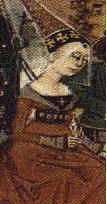 Isabella (pictured right) gave each of her sisters-in-law gifts of highly-embroidered silk purses. Later that year at a royal tournament, Isabelle saw two of the purses being carried by two knights, Phillipe and Gauthier d’Aunay. Uncertain as to how the two brothers had acquired them, she wrote to her father suggesting the two men may have been having affairs with her sisters-in-law.
Isabella (pictured right) gave each of her sisters-in-law gifts of highly-embroidered silk purses. Later that year at a royal tournament, Isabelle saw two of the purses being carried by two knights, Phillipe and Gauthier d’Aunay. Uncertain as to how the two brothers had acquired them, she wrote to her father suggesting the two men may have been having affairs with her sisters-in-law.
King Philip had the two knights placed under surveillance and later arrested along with his three daughters-in-law. It was alleged that Margaret and Blanche had had adulterous affairs with the d’Aunay brothers over a period of years at Le Tour de Nesle, on the left bank of the Seine, opposite the Louvre. Joan was suspected of being complicit in the liaisons and was later also accused of adultery.
Under torture, both brothers gave details of the affairs and implicated Joan. The princesses were ‘interviewed’ but not tortured; confronted with the d’Aunay’s confession, Margaret and Blanche confessed; Joan continued to express her innocence. They were brought before a tribunal and found guilty. Margaret and Blanche were stripped of their clothes, dressed in sackcloth and their heads shaved. It is uncertain if Joan suffered the same punishment; the tribunal did not find her guilty but neither did they acquit her.
The women were taken to Pontoise in the north of Paris. There they were made to witness the d’Aunay brother’s execution. Phillipe and Gauthier were castrated and their private parts thrown to the dogs, then flayed alive; molten lead was then poured onto their exposed skin, their bodies strapped to a wheel and their bones broken with iron bars; they were then finally decapitated. Margaret and Blanche were sent to the imposing castle of Chateau Gaillard. Margaret was imprisoned in a high tower, open to the elements, given neither clothing nor bedding and little food.
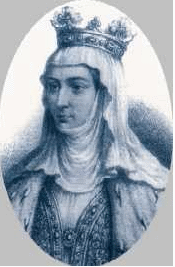
By the end of the year King Philip was dead. Because his wife’s affair called into question the legitimacy of their only child, Jeanne, Louis needed to marry again quickly to secure the succession. During her imprisonment Margaret had remained married to Louis, but she died in August 1315, just five days before her husband, now King Louis X married his second wife. At the time the whisper on the streets of Paris was that she had been strangled on orders from her husband.
Louis’s new wife Clementina of Hungary was eight months pregnant when in 1316 Louis himself died following a game of real tennis. If she gave birth to a son, he would be king. Were she to give birth to a daughter, then the succession was less clear. Because Margaret and Louis were still married when Margaret died, their daughter Jeanne would outrank the newly born princess in the succession.
Clementina did indeed have a son, but he lived only five days. The Royal Regent, the dead King’s brother Phillipe moved to secure the crown for himself, bypassing the stronger claim of his niece Jeanne.
He succeeded by invoking an ancient, obsolete legal code of the fifth-century Salian-Frankish kingdom (the present-day Somme and Isle de France). The particular clause was one that differentiates male from female inheritance. Men inherited landed property, but women could only inherit personal property. QED a woman could not inherit the Crown. This determination became known as ‘Salic’ law and over the centuries was a cornerstone of the French legal system.
Phillipe assumed the throne as King Philip V but was still married to Joan. She had fared better than her sister princesses. She had always maintained her innocence and her imprisonment at Chateau Dourdan was more humane. Philip apparently still loved her and argued for her release, and she was accepted back at court. Now Queen of France, she was reunited with their four daughters.
In 1322 King Philip fell ill and died. Because of his introduction of Salic law, having no sons, none of his daughters could inherit. Thus the French Crown passed to his younger brother who became King Charles IV.
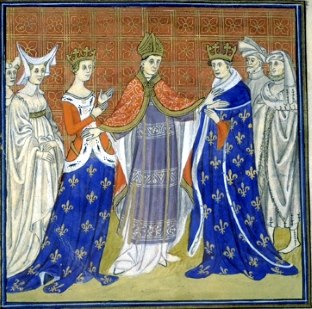
Charles was still married to Blanche, who was languishing underground in primitive conditions in Chateau Galliard. As King he needed an heir: he paid the Pope to annul their marriage, a condition of which was that Blanche would be released and allowed to join a convent. She entered a Cistercian order at Maubuisson, north-west of Paris and lived until 1332, having given birth to an illegitimate daughter by her jailer while in prison in Chateau Galliard.
When King Charles IV too died in 1328 with no male heir, the French court was thrown into turmoil. Charles was the third of Phillip IV’s sons to succeed to the throne, but he would be the last of the Capetian line of Kings. He died leaving a pregnant wife, Jeanne d’Évreux who again it was hoped was carrying the saviour of France. with the country now ruled by a Regent, Charles’ nephew, Philip of Valois. But in April, Jeanne gave birth to a daughter, Blanche.
The French Crown could now pass to one of two contenders; Philip of Valois, Charles’ nephew or the grandson of old King Philip IV through his daughter Isabelle, the King of England, Edward III. Blood meant Edward had a far stronger and more direct claim, but the French lords were not keen on having the King of England as their overlord.
To deny Edward, the French lords needed a justification for giving the Crown to Philip of Valois, and once more they invoked Scalic Law. Philip IV’s daughter Isabelle could not pass on a claim to the French crown when she was not entitled to it. Hence Phillip of Valois became King Philip VI.
Although ‘Salic’ law became a cornerstone of the French legal system, the same Salian-Frankish law code said, “…if the sons are dead then a daughter may receive land just as the sons would have done had they lived.” The French nobility used Salic law to justify Philip of Valois becoming King, even though they knew that Edward III of England would fight for his ‘right’ to the French crown.

The decision was pivotal in Anglo-French relations, triggering the long-lasting conflict between them known to history as the Hundred Years War. Edward invaded France in 1337, keen to press his claim to the French throne and recreate the Angevin Empire of his ancestor Henry II. The war would last, on-and-off, until 1453 and would decimate the French nobility and leave the country economically devastated.
What is ironic is that Isabelle developed a reputation as an infamous adulteress herself, having a high-profile affair with Roger Mortimer, the Earl of March and possibly having her husband Edward II murdered. She set in motion ‘L’affaire de la Tour de Nesle’ which shook the French monarchy and directly contributed to the succession crisis in France that culminated in the Hundred Years War.
Written by Michael Long. I have over 30 years experience teaching History in schools and examiner History to A level. My specialist area is England in the 15th and 16th centuries. I am now a freelance writer and historian.
